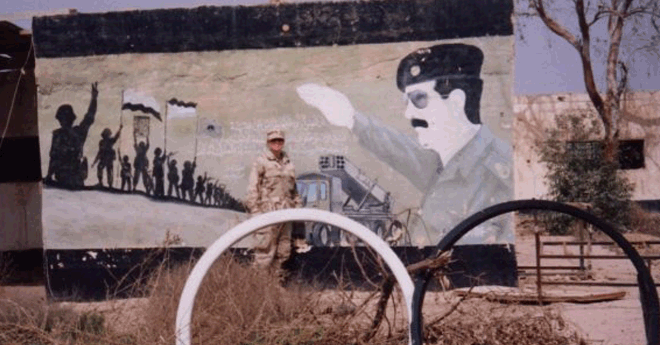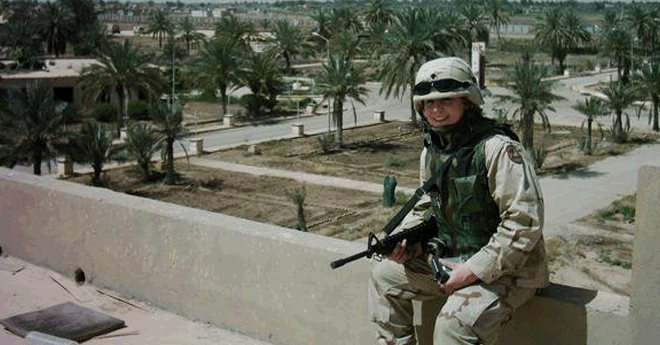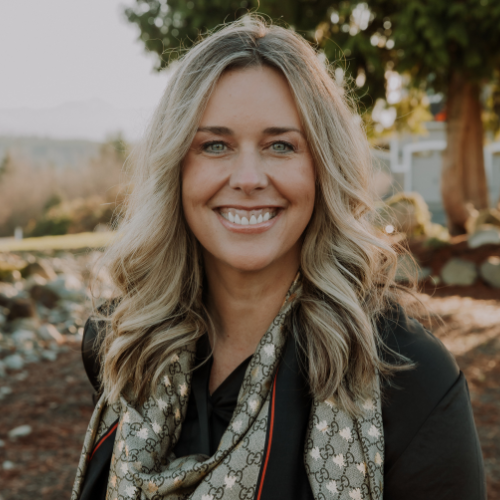TILLMAN TUESDAY: Lyndsey Anderson Found Passion for Art in Iraq
Pat Tillman Foundation can’t fulfill its mission to empower military veterans and their spouses without the generosity of our supporters across the country. Nationwide, nearly 350 Tillman Scholars are striving to impact our country and communities through their studies in medicine, law, business, policy, technology, education and the arts. Every “Tillman Tuesday,” we are committed to highlighting the individual impact of a Tillman Scholar, focusing on their success in school, career and community—all thanks to your support.
This week’s Tillman Tuesday features Army National Guard veteran Lyndsey Anderson who was part of the first class of Tillman Scholars selected in 2009. Already having earned an MA of Museum Studies from NYU, Lyndsey is finishing her second Masters in June 2015, an MS Ed in Leadership in Museum Education from Bank Street College of Education. Lyndsey grew up in a suburb of Des Moines and is currently sharing her passion for art as Manager of Visitor Experience and Access programs at the Rubin Museum of Art in New York City.
Can you share how you made the decision to join the military and serve your six-year term with the Army National Guard?
“I joined the Iowa Army National Guard in high school before Sept. 11 and did a split training option. I went to basic training between my junior and senior year of high school and was a senior when 9/11 happened. Having been a competitive soccer player in high school, I was physically and mentally fit, and I was looking for a way to see the world and challenge myself in ways that I may not have otherwise been challenged in Des Moines. I saw my National Guard experience as an opportunity to expose myself to new experiences and gain a different perspective on things.”
Having been part of the war in Iraq in the early stages, what was that experience like for you and what did you learn about yourself as a person?
“I was deployed at the age of 19 (December 2003) and came back when I was 21 (January 2005). The moment we landed in Iraq I was struck by the feeling that we were among a treasure chest of amazing artifacts and remnants of cultural heritage. I had the opportunity to work closely with Iraqi civilians and was stationed in Al Taji, former Iraqi Republican Guard base during the Saddam era, which later became a training site for the Iraqi National Guard. I was thrilled for the opportunity to engage deeply with the local community and to foster a genuine cultural exchange. I sincerely enjoy learning from others, so my experience in Iraq was a great opportunity for me to do that while embracing our shared Humanity and diversity from all walks of life.
I am deeply committed to developing as a leader and building upon some of the leadership experiences I gained while in Iraq. I believe it is important to inspire people to want to become engaged rather than forcing them to complete a task by way of traditional authority. Overseas, my service was made meaningful and successful by working effectively with the team I was given- and that’s how I live my life now. I try to get a group engaged rather than dictate. By working with compassion and empathy towards both the local civilians and my fellow military counterparts, I was able to see the beauty that was present, and was able to embrace a multitude of traditions that were previously unfamiliar to me.
Where does your passion for art stem from?
“When we arrived at our post in Iraq, it was a trove of objects; ornately-scrawled calligraphy, portraits of Saddam Hussein, hand-transcribed books, etc. I remember flipping through a pamphlet laying on the ground and a photo fell out. I was instantly intrigued by the previous owner’s life story, so I started collecting some of these left-behind objects and brought many of them home. I am in awe of the stories and emotions that physical objects can provoke. Art and cultural objects tell a story of our present and our distant past, and it’s amazing to me how we too can touch or view an object created by human hands year, decades, or even centuries ago. With every object I encountered, in museums, historic sites, or in a person’s home, I wanted to know the story behind it. While in Iraq, I found my passion and as I result when I got back in 2005 I decided to change my major from Communication and Journalism to Art History and Anthropology.”

For those that may not know or have never heard of the Rubin Museum of Art in New York City, could you please explain its uniqueness and what your role entails?
“Our collection is based around art from Himalayas, India and neighboring regions. Inherent in the collection and objects we exhibit are numerous universal themes such as compassion, transformation, and interconnectedness. We display art as old as the 5th century and as contemporary as artists who were commissioned to create works for a museum’s show.
My role at the Museum is Manager of Visitor Experience and Access programs. My team and I provide opportunities to assure our visitors are having a meaningful experience-that they are warmly welcomed, actively engaged, and that the museum is accessible for all. We offer several programs for persons with disabilities, such as programs for individuals with Dementia, verbal description and touch tours for the blind, tours in American Sign Language and we are able to accommodate a variety of other requests as well. The goal of the museum as well as my personal goal is to ensure that any person from any walk of life has access to our collection. We want our content to be accessible for all visitors and want people to be engaged in our institution.”
What made you decide to apply to be a Tillman Scholar?
“I heard about the Tillman Scholar program because I was formerly the President of the Student Veterans Association at University of Iowa and someone had posted it on Facebook. I read about it and realized it was only a few days before the application was due, so I never thought I would have a chance at being selected. My motto when I came home from Iraq was, ‘take the leap.’ With that being said, I did the best I could on the application and before I knew it, the Foundation called me for an interview. A few days later, I was informed I had been selected! Having someone believing in me and what I wanted to do was really empowering for me.”
Having been selected as a member of the first class of Tillman Scholars, with the program continuing to grow, what type of honor does ‘Tillman Scholar’ carry with you?
“Every time I read about the new class I’m humbled by the group of people I have the honor of being associated with, men and women who are making a difference in a lot of individual lives. Having a network of like-minded people who share a common experience and language is another way to unite with fellow veterans and spouses. I love to constantly check in and be reminded of what an honor it is to carry the title of Tillman Scholar. I’m honored to be able to live out what I promised in my application.”
How has the Tillman Scholarship affected your life and career?
“Beyond initial support and having someone believe in what I wanted to do, it has allowed me to pursue a career I’m deeply passionate about and a career that I believe can positively and does positively change people’s lives. I’m genuinely inspired by what Pat stood for. It’s a loss not to take advantage of the resources and network the Foundation has built for its scholars. ”
Growing up in Iowa and now living in New York City, how different was that for you in the early stages of moving to NYC?
“I was so excited to move to New York City! I was in a great graduate program with fantastic individuals who understood we were doing something we’re deeply passionate about. I did not feel a major culture shock because I was living it up and going to museums every other day. Being in Iraq was a primer and nothing that could compare to the NYC culture shock, so I didn’t struggle too much. I feel like this is where I was meant to be.”
Where do you see yourself in five years?
“I have been with Rubin Museum for five years now and I’m currently finishing my Master’s program. I see myself continuing to grow in a leadership role and working to continue to develop my own leadership practice. I’m most inspired by working with non-traditional audiences by continuing to make cultural opportunities accessible to audiences that are typically marginalized.”
“If I could impart anything on people it would be: Try to live gracefully through the times that may be the most challenging. Those are the times that are the most powerful for transformation.”



